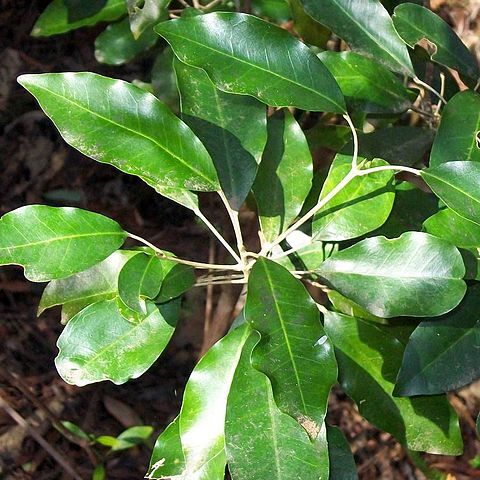A tall shrub. It grows 3-9 m high and spreads 3-5 m across. It has a round to spreading crown. The leaves are 7-20 cm long and 2-9 cm wide. There is only one leaflet. It is shaped like an ellipse and has a blunt end. These leaves are attractive large shiny leaves. They are paler under the leaf. The flowers are 1.5-2 cm across. They are yellowish. They occur in many flowered clusters 4-6 cm long. The fruit is 0.8-1.5 cm across and 4-8 lobed. It is juicy/fleshy and white when mature.


